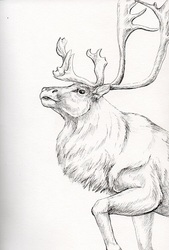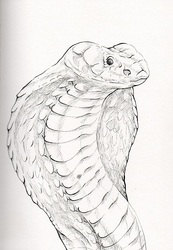Sign In
CloseTotem of the day is Seagull! Listen to communications you may be opening to from Nature spirits. In particular, water sprites or fairies. Take the time to work on clearly up miscommunication that have occurred around you. To help avoid miscommunication, pay close attention to your interactions with others including body language and verbal tones. If possible, spend time meditating by a body of water. Particularly near the sea with your meditation focusing on the beat of the waves and wind. Work on cleaning your home by letting go and recycling what you can. The seagull spirit guide is known for it's connection to a calm mind, perspective, freedom, and unlikely opportunities. Seagull can come as a reminder when we need to fly above a problem to view it from a new perspective in order to learn how to solve it. Do not let yourself be drawn down into a situation of drama and high emotion. Seagull can also show up as a messenger or a sign that communication is attempting to reach you from another realm or spirit. Open your sense of community and cooperation as you listen to those around you.This may also be a good time to look to expanding your creative interest and, perhaps, finding a new skill or resource. This spirit guide holds a strong connection to wind and water. Having been a symbol of coastal regions all over the world. They are totem animals to Native American tribes such as the Chippewa and Athna tribes. In Greek tales, the seagull is seen as incarnations of the Goddess Leukothea who was a nymph. The seagull reminds us to let ourselves be free and explore the world around us. People who connect with Seagull balance their emotional and logical minds easily and are often adept at communicating and listening. These individuals don't get ruffled over things very often by possessing a calm attitude. They often enjoy social settings and maintain proper manners and clothing for whatever situation they find themselves in. Recycling is very important to these souls and they will devote themselves to helping the environment.
Seagulls, Laridae, are opportunistic, omnivorous birds that can live up between 10 and 15 years in the wild. Also known as Gulls, these birds are most closely related to terns. There are over 55 species of Seagull. The smallest species called the Little Gull only grows to just over 4 oz in weight and under a foot in length. The largest species is the Great Black-backed Gull which grows to 4 lbs with a length of 30 inches. In general, these birds are heavy bodied with long wings and webbed feet. Their bills are heavy and slightly hooked to aid in catching slippery fish. In larger species, their bills are often stouter. While most seagulls generally have the same features, there are three species that possess differently shaped tail feathers. The Ross's gull has a wedge-shaped tail while the Sabine's gull and swallow-tailed gull have forked tails. Seagulls can be found all over the world with a preference for coastal regions while generally avoiding tropical regions. They have been known to breed on every continent including even areas of Antarctica and the Arctic. The Grey Gull is an exception that can be found breeding in the interior of dry deserts. The majority of Seagulls are migratory,moving to warmer areas during the winter, however the distance and destination varies depending on species. Some species migrate longer distances such as the Franklin's gull which migrates from Canada to the south of South America. Others will prefer shorter migrations or simply disperse along coastal areas. Seagulls are among one of the least specialized of all seabirds. However, this allows them to have equal skills at swimming, walking, and flying. They are able to walk on land better than any other seabird. The diet of a Seagull consists of almost anything it can find from fish, marine life, and small terrestrial creatures like earthworms, rodents, and insects to seeds, fruits, carrion, and even human refuse or junk foods like chips. Their diet depends highly on their environment. Yet feeding on marine prey is more common during the non-breeding season when they are spending more time out on bodies of water. During the breeding season, the hunt for terrestrial prey is higher. The methods they use to find prey also varies. Some species of seagull are able to catch insects while flying in the air, however, this is less common in larger species. Seagulls will also engage in diving beneath water for prey, snatching targets in swoops from land or water, foraging among rocks, or by treading water with their webbed feet to kick up prey. When in possession of clams or mussels, seagulls are known to fly high into the air to drop these hard shells onto rocks to smash them open. Seagulls are known as colonial breeders which means they will gather together in large groups with up to over thousands of individuals when reproducing. Being monogamous, seagulls will form bonds that will last their entire life. Every year they will return to the same breeding ground. Seagulls will arrive a few weeks prior to reproduction in order to reestablish their pair bonds or to begin new courtship for un-mated pairs. Nests are built primarily on the ground with some species building them on cliffs or in trees. Females will lay generally three eggs which are incubated by both parents who switch off every few hours during the day then change to only one parent incubating throughout the entire night. After hatching, the chicks are guarded by at least one parent at all times while they develop until they are ready to fledge between 1 and 3 weeks later. In the early stages of raising their young, the female will do most of the guarding while the male attends to feeding the young.
Submission Information
- Views:
- 414
- Comments:
- 0
- Favorites:
- 1
- Rating:
- General
- Category:
- Visual / Traditional




